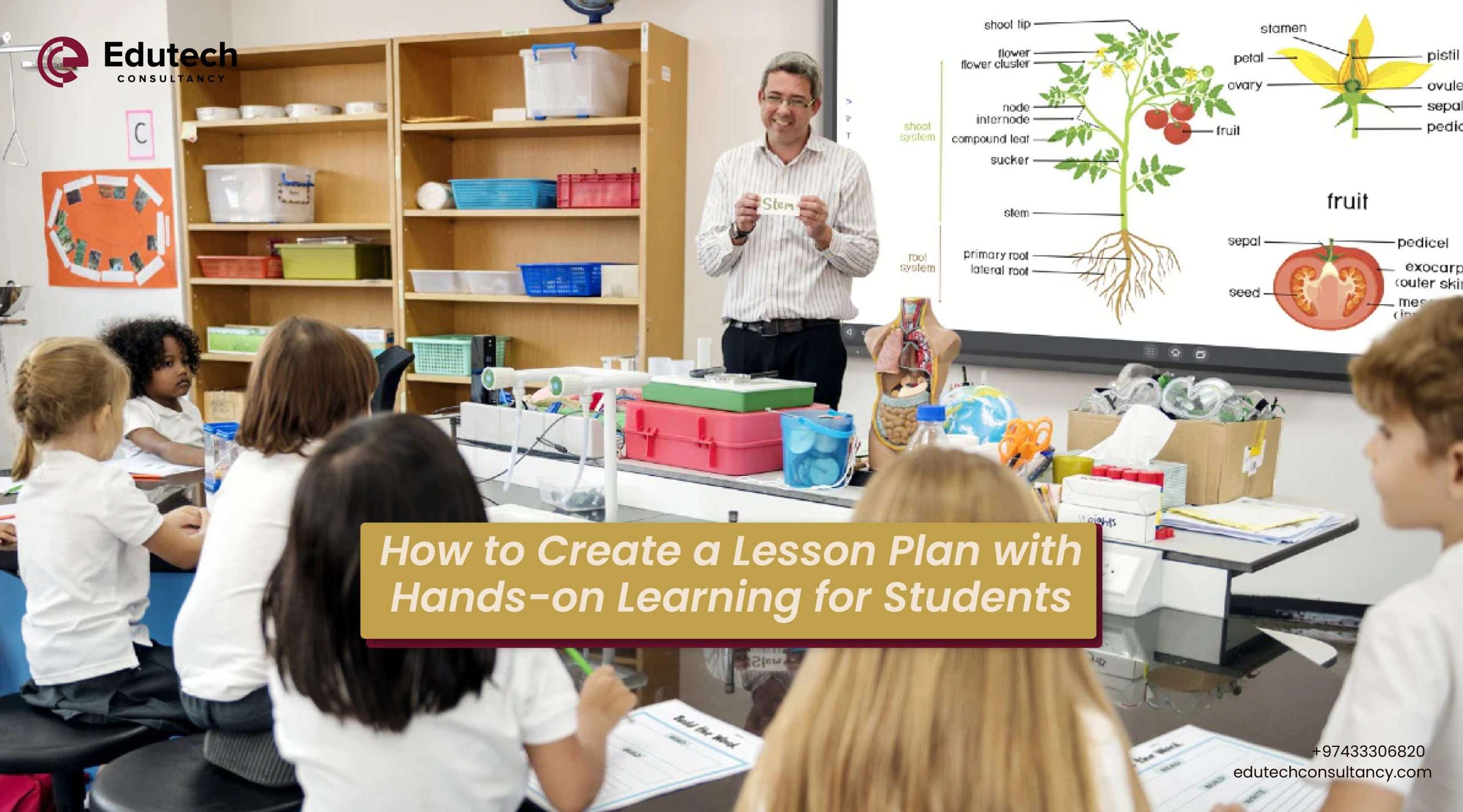Teachers often aspire to design and implement a lesson plan that ensures students understand the material taught well. Consequently this also helps retain the information learnt for long-term use. To improve the learning experience for students, teachers must also know how to create a lesson plan incorporating hands-on activities. The digital world as it evolves rapidly makes it mandatory for teachers to provide a learning environment that fulfills the objectives of gaining knowledge with sound results. In this context hands-on or experiential learning gives the perfect solution to spark curiosity with learning in students.
In this blog, we will explore the key steps on how to create a lesson plan that incorporates hands-on learning for students of all ages and abilities. So whether you are a fresh entry into the teaching world or a seasoned one this blog will provide a clear understanding of how to create a lesson plan that promotes active learning and student engagement. Let’s explore the world of hands-on learning and see how it can be a launch-off to new educational gateways.
Key components to consider on how to create a lesson plan
It is imperative to note that in any subject teaching, hands-on learning gives a clear way to understanding. While there may be many things to consider and analyze there are certain things educators must keep in mind. This helps them design, deliver and implement the learning goals through hands-on learning successfully.

Define the learning objectives:
Before starting any activity it is vital to know what you want your students to learn. Additionally your objectives should also be clear on what skills or knowledge students will gain at the end of the lesson. Having clear objectives provide a direction to focused outcomes in learning for students.
Example: By the end of this lesson my students will be able to identify the parts of a plant.
Align the objectives with curriculum goals:
As a teacher you must make sure that the lesson plan you develop is closely aligned with your curriculum goals. This simply means that the lessons you make must add beneficially to the academic outcomes you expect to achieve.
Example, if you want to improve your students’ reading skills, your lesson objectives must be to enhance students’ ability to identify the main idea of a text and summarize key points.
Give clear and concise instructions to students:
When a teacher provides clear instructions, it ensures that students understand the prospects for each activity. Whether written or verbal, use simple language. For complex tasks, write instructions in a manner that breaks down the task into easier steps.
Example: Instead of saying “work together to complete the task”, the teacher must provide instructions like form a group of four and discuss the advantages and disadvantages of technology.
Design activities that include experiments and projects:
Once done with objectives and instructions, it’s time to learn through real time practice. Aid your students’ learning with activities that provide hands-on experience.
Example: If you are teaching about the life cycle of a plant, ask a student to plant seeds. Then allow them to observe the growth of plants over time to help them learn what they have been taught.
Incorporate technology where ever possible:
Classrooms today are not free from the shadow of technology. Teachers must utilize online tools, apps or virtual simulations to upgrade their student’s learning.
Example: Many apps provide simulations of complex concepts in Physics and Math. Students may benefit more from this interactive learning when they use such tools regularly.
Some additional tips on how to create lesson plans for experiential learning:

- Assessment and feedback: Targeted feedback as part of an effective lesson plan helps students understand their strengths and weaknesses. Consequently, this can motivate them to continue learning and improving.
- Reflection and revision: Helps students reflect on their learning experiences with a deeper and better understanding.
- Differentiated instructions: Teachers must ensure to adapt the lessons to meet the different needs of the students.
- Build a collaborative learning environment: Promote cooperation and peer learning. As a result, it will help students develop social skills and better communication abilities.
Final Thoughts
Creating and implementing a lesson plan that has hands-on learning opportunities for students is a powerful way to make education more interactive. When teachers know how to create a lesson plan with clear objectives, they can reflect on the lesson afterwards really well. By incorporating hands-on learning into their lesson plans, educators can create a more effective and memorable classroom experience. And with little creativity, they can flip their classrooms into lively and inspirational learning environments.
If you are looking to enhance your lesson planning skills furthermore, join the Lesson Planning Workshop in Qatar on 12th October organized by Edutech Consultancy. This workshop will help you learn to design effective lesson plans and will provide you with the tools, tips, and strategies to make lesson planning easier and more efficient.
Register here to secure your spot for this one-day workshop.


